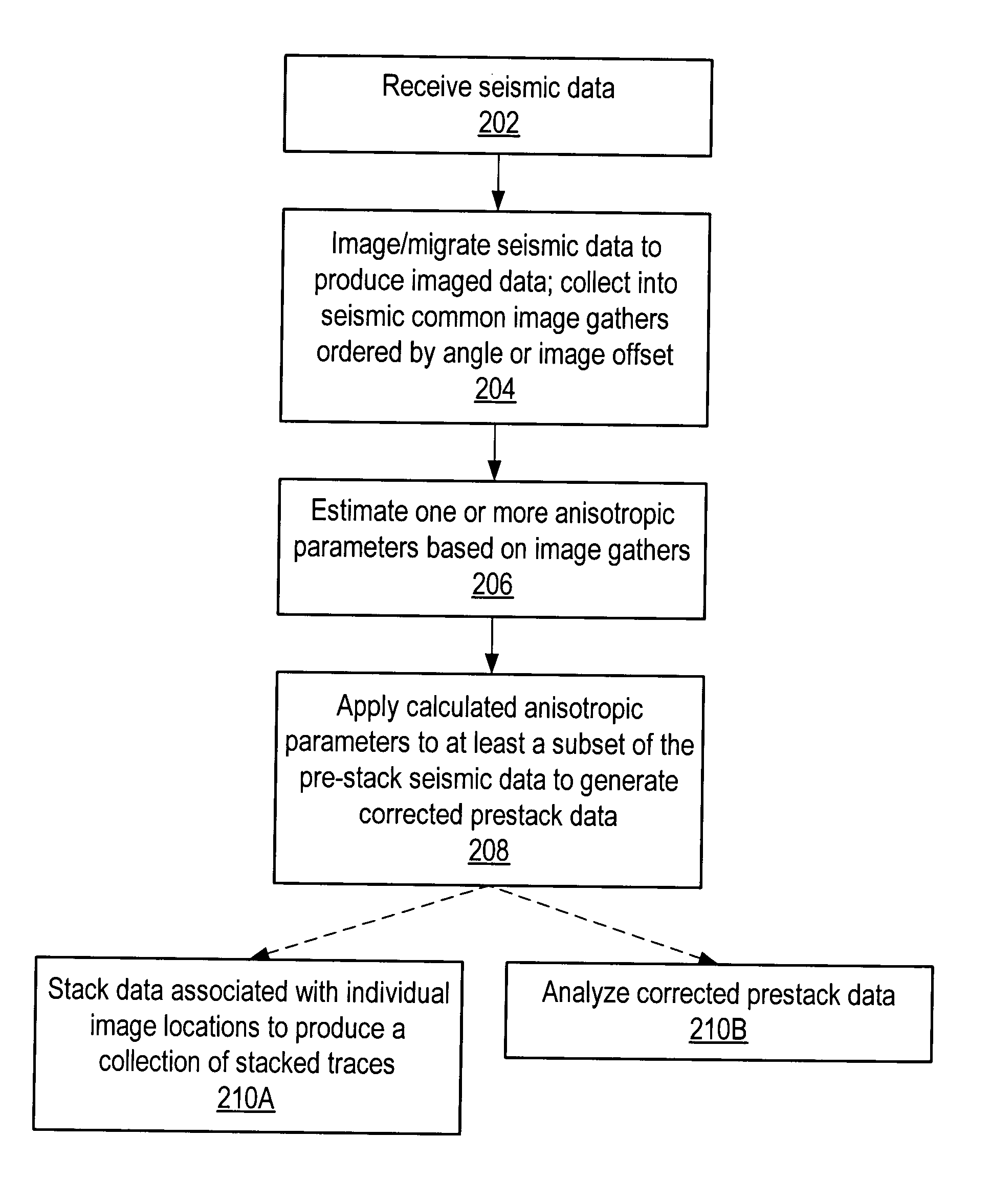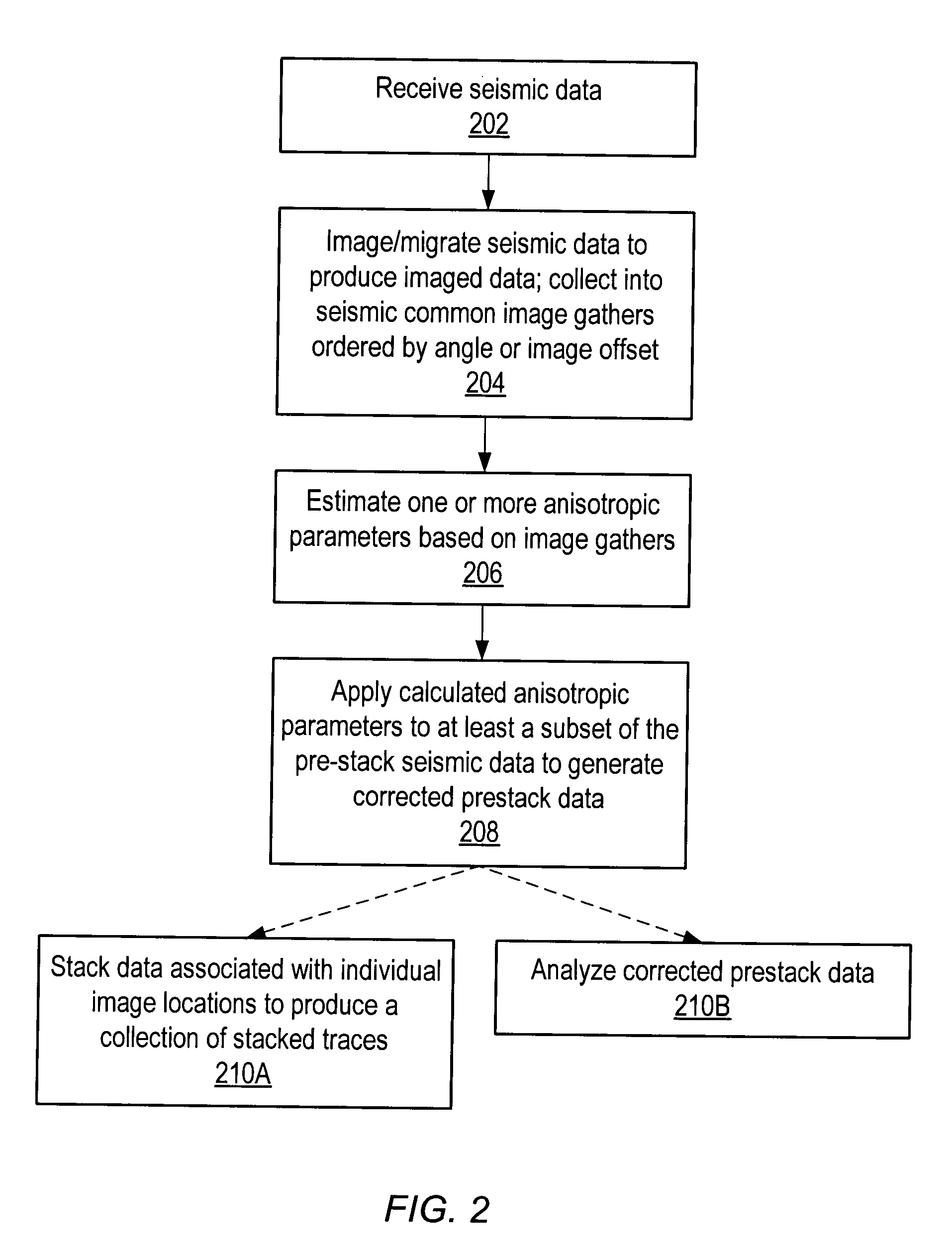Seismic analysis using post-imaging seismic anisotropy corrections
a seismic anisotropy and seismic analysis technology, applied in the field of seismic analysis using post-imaging seismic anisotropy corrections, can solve the problems of loss of certain information that cannot be recovered from stacked data, wave equation migration techniques are typically more robust than kirchoff migration techniques, and traditional seismic processing, which is based on kirchoff migration techniques
- Summary
- Abstract
- Description
- Claims
- Application Information
AI Technical Summary
Problems solved by technology
Method used
Image
Examples
Embodiment Construction
[0054] Reshef (1996) described a unique output domain for seismic imaging, applicable to 2D or 3D data and time or depth imaging. In these gathers, referred to herein as "image offset gathers", being a special form of image gather, where the "traditional" source-to-receiver offset distance for the horizontal axis is replaced with a value of source-to-common-surface-location (CSL) distance plus common-surface-location-to-receiver distance. Common surface location (CSL) is the surface spatial location corresponding to the subsurface image or reflection point (CIP / CRP) of an image gather. Reshef noted specific advantageous characteristics of these gathers, such as separating energy reflected from "flat" and from "dipping" rock formations. Specifically, energy from "flat" subsurface reflectors tends to collect on the "near" traces (smaller shot-image-receiver distance), while energy from more and more steeply dipping subsurface reflectors, i.e., "dipping energy", tends to collect on fur...
PUM
 Login to View More
Login to View More Abstract
Description
Claims
Application Information
 Login to View More
Login to View More - R&D
- Intellectual Property
- Life Sciences
- Materials
- Tech Scout
- Unparalleled Data Quality
- Higher Quality Content
- 60% Fewer Hallucinations
Browse by: Latest US Patents, China's latest patents, Technical Efficacy Thesaurus, Application Domain, Technology Topic, Popular Technical Reports.
© 2025 PatSnap. All rights reserved.Legal|Privacy policy|Modern Slavery Act Transparency Statement|Sitemap|About US| Contact US: help@patsnap.com



